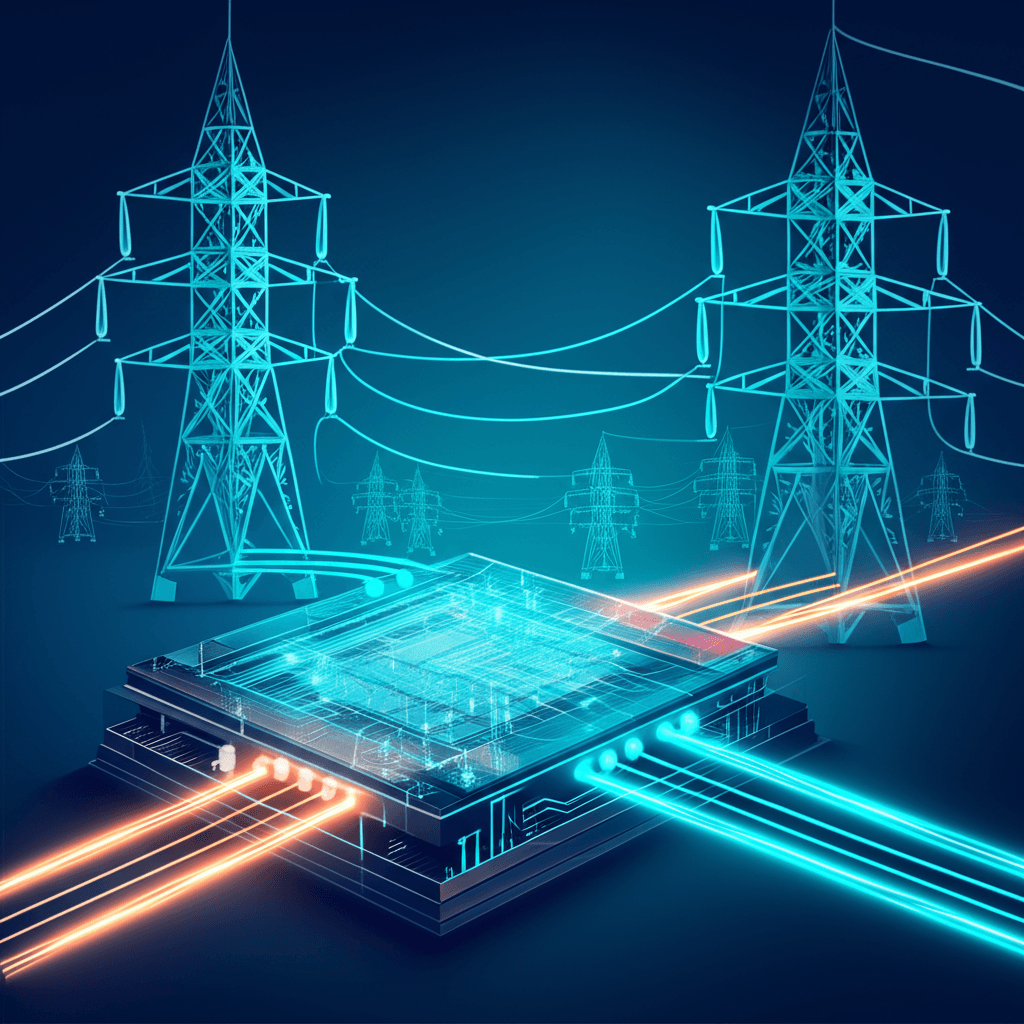First for tech: Google lets utilities curb AI energy to stabilize grid.
Facing AI's booming energy needs, Google partners with utilities to strategically pause non-essential workloads, ensuring grid stability.
August 5, 2025

In a landmark move reflecting the growing energy demands of artificial intelligence, Google has initiated a program allowing electric utilities to request a slowdown of its non-essential AI workloads during periods of high stress on the power grid.[1][2][3] This proactive step, a first for a major U.S. tech company, involves partnerships with Indiana Michigan Power (I&M) and the Tennessee Valley Authority (TVA) and signals a critical new phase in the relationship between the tech industry and energy providers.[4][5] The arrangement allows these utilities to ask Google to curtail power consumption at its massive data centers, which house the energy-intensive servers that train and run AI models.[4][6] By temporarily scaling back or shifting these computational tasks, Google aims to help stabilize the grid during peak demand, such as during extreme heat waves, while managing the explosive growth of its AI operations.[3][7] This strategy, known as demand response, is a significant departure from the traditional model of uninterrupted power consumption for data centers and highlights the urgent need for innovative solutions to manage the burgeoning energy footprint of the AI revolution.[4][8][9]
The collaboration between Google and utilities like I&M and the TVA is built on the principle of demand response, a strategy where large energy consumers reduce their electricity use in exchange for incentives, thereby easing pressure on the grid.[4][5] Historically, demand response programs have been the domain of heavy industrial users like manufacturing plants or, more recently, cryptocurrency miners, who can scale their operations down during peak times.[1] Google's participation marks a significant expansion of this concept into the tech sector, specifically targeting the flexible nature of certain AI workloads.[1][10] The agreements empower utilities to request that Google reduce its power draw when the grid is strained by factors like extreme weather.[3] In response, Google can reschedule non-urgent machine learning tasks, such as model training or processing YouTube videos, to off-peak hours or shift them to data centers in regions with more available power.[3][11][12] This initiative builds on a successful pilot program with the Omaha Public Power District in 2024, where Google reduced power demand associated with machine learning during three grid events.[8][13][10] Steve Baker, the president and COO of I&M, emphasized the importance of such partnerships, stating that leveraging load flexibility is a "highly valuable tool" for managing the addition of large new loads to the power system.[9][14]
The core driver of this innovative energy management strategy is the voracious and rapidly growing appetite for electricity from AI data centers.[15][5] The computational tasks involved in training large language models and running complex AI applications are incredibly resource-intensive, requiring significant and sustained power.[16][17] Projections indicate that data centers could account for a substantial portion of U.S. electricity consumption by 2030, with some estimates suggesting a figure as high as 9% to 12%.[1][11] This surge in demand is happening faster than the nation's aging power grid can adapt, leading to concerns about potential shortages, blackouts, and increased costs for all consumers.[4][15] Utilities are facing unprecedented requests for new connections from data center operators, with some projects requiring the power equivalent of a small city.[18] The mismatch between the rapid deployment of AI infrastructure and the slower pace of building new power plants and transmission lines creates a critical bottleneck.[19][18] Google's demand response program is a direct attempt to bridge this gap, allowing for the quicker interconnection of new data centers by assuring utilities that these massive loads can be managed flexibly.[8][9][13]
The implications of Google's flexible demand strategy are far-reaching, setting a potential precedent for other major tech firms like Microsoft, Amazon, and Meta, who are also heavily investing in AI infrastructure.[4] By demonstrating that even mission-critical technology operations can incorporate a degree of energy flexibility, Google is pioneering a model that could become standard industry practice.[11] This approach offers multiple benefits: it enhances grid stability, helps avoid the costly and time-consuming construction of new power plants and transmission lines, and supports the integration of more renewable energy sources, which are often intermittent.[4][13][20] However, the program is still in its early stages and has limitations.[21][3] Google has clarified that essential, customer-facing services like Search and Maps, as well as its cloud customers' AI jobs, are not part of this flexible demand initiative, as they require constant high reliability.[3][22] The program focuses on "non-essential" or "non-urgent" internal workloads, which can be rescheduled without immediate impact on core products.[3][12]
In conclusion, Google's decision to allow utilities to request a slowdown of its AI workloads represents a pivotal moment in the intersection of technology and energy. It is a pragmatic response to the undeniable strain that the AI boom is placing on the world's power grids.[15][23] By embracing demand response, Google is not only mitigating its own operational risks but also providing a scalable model for how the tech industry can become a partner in ensuring grid resilience rather than just a massive consumer of its resources.[8][14] This move is part of Google's broader sustainability efforts, which include a goal to operate on carbon-free energy 24/7 by 2030 and the use of AI to optimize its own data center cooling systems.[7][24] As the AI revolution continues to accelerate, the ability to flexibly manage energy consumption will be crucial, and this initiative signals a future where the growth of artificial intelligence is inextricably linked with the intelligent management of the energy that powers it.[3][25]
Sources
[4]
[5]
[8]
[9]
[11]
[12]
[13]
[16]
[17]
[18]
[19]
[21]
[22]
[23]
[24]
[25]